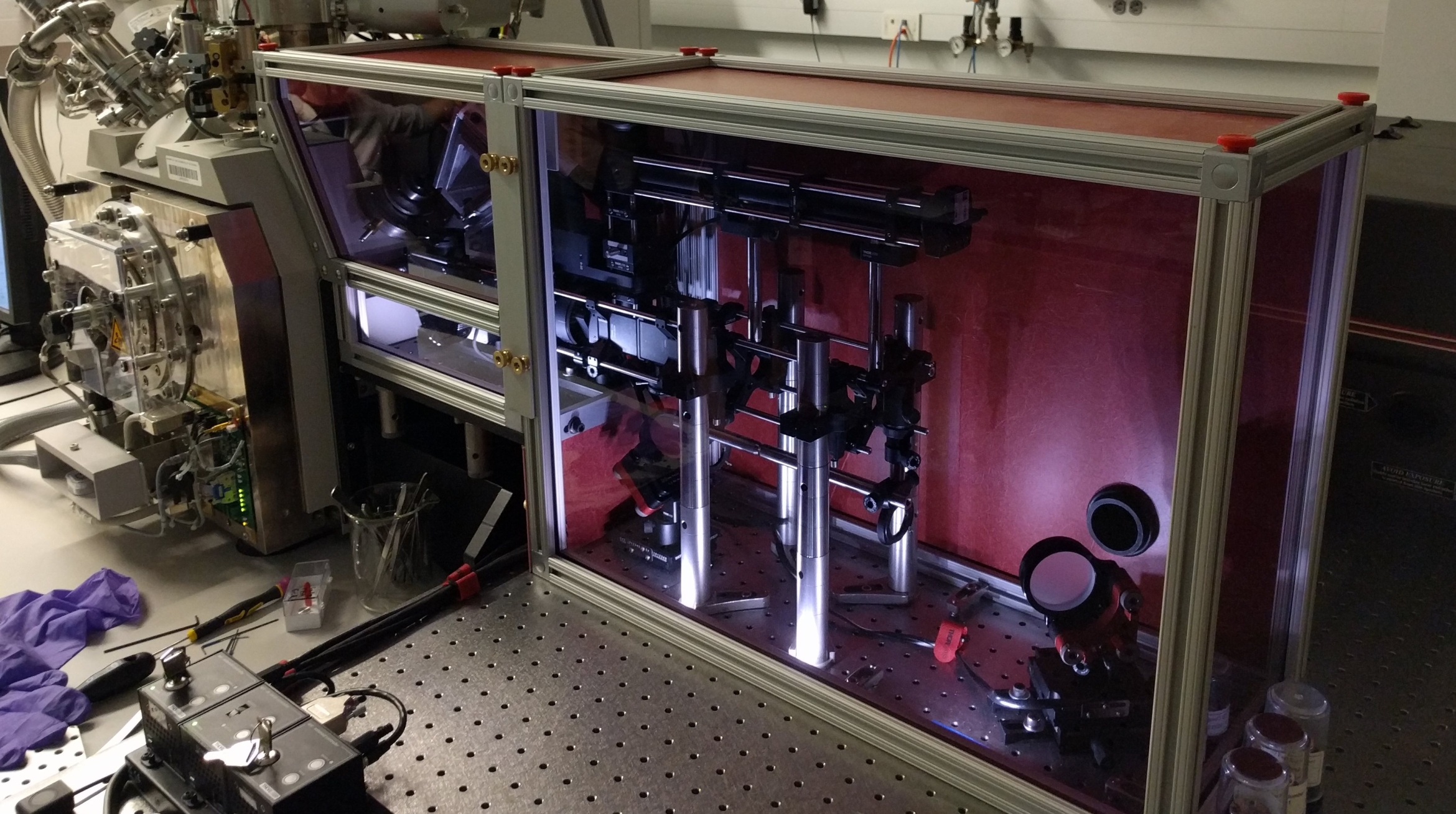
UC Santa Barbara researchers and their collaborators are getting a big boost to their research capacities, in the form of shared instrumentation that enhances sampling, imaging, measuring and the general efficiency and effectiveness of their work. Thanks to the National Science Foundation’s Major Research Instrumentation (MRI) program, the campus will acquire state-of-the-art equipment for use by researchers from a variety of disciplines.
“Institutions across the country compete fiercely for MRI funding, and not all proposals are granted,” said Umesh Mishra, dean of the UCSB College of Engineering. “But all four of the proposals submitted by UCSB in 2023 were funded in the total amount of $3.7 million. Because of UCSB’s highly evolved culture of collaboration, faculty and students from many departments will be able to access new state-of-the-art equipment for their projects.”
The instrumentation is expected to arrive on campus this year.
Laser ablation and mass spectrometry
Geochronology is the name of the game for Earth scientists John Cottle, Matthew Jackson, Matthew Rioux and Roberta Rudnick, whose work focuses broadly on how and in what environments geologic features came to be. The integrated laser ablation time of flight inductively coupled plasma mass spectrometer is actually two instruments: a laser system that can sample materials at exceedingly fine scales — smaller than the diameter of a human hair — and a plasma mass spectrometer that operates at 6,000 degrees Kelvin (the same as the surface of the sun) to turn samples into individual atoms which can then be analyzed.
“We have a history of developing new analytical techniques to solve geologic problems, and we felt that this new type of instrument, which has not really ever been used for Earth materials, would allow us to answer new questions,” Cottle said. While the researchers have long had the ability to date and characterize materials, acquiring environmental measurements from Earth’s deep past via proxy records from carbonates will be a new dimension of research, he added. “This represents a significant advance in technology and therefore has great potential, and will allow UCSB to remain at the forefront of analytical geochemistry.”
Isotope ratio mass spectrometry
A changing climate means shifts to the chemistry of the Earth environment, impacting all living organisms. Researchers Alyson Santoro, Morgan Raven, David Valentine and Gretchen Hoffman from the Department of Ecology, Evolution and Marine Biology, and SBC LTER lead principal investigator Robert Miller are interested in how that is happening in the ocean. The isotope ratio mass spectrometer allows them to measure the relative concentrations of different isotopes of elements such as carbon, nitrogen, oxygen and sulfur from a variety of samples, both in the ocean and on land.
“For the first time, we’ll be able to measure isotope ratios in specific molecules like amino acids,” Santoro said. “That measurement can be used to help better understand food webs, which is a main goal of both of UCSB’s Long Term Ecological Research projects in Moorea and along the Santa Barbara coast.” The equipment will allow researchers from various departments to ask and answer questions both basic and novel, from how kelp supports coastal foodwebs and fisheries to where and how pollution is affecting the ocean environment, to how sulfur chemistry impacts the long-term preservation of carbon in the ocean.
Helium recovery
There’s a critical shortage of helium in the world, which could have serious impacts to magnetic resonance facilities, including two at UCSB: the Materials Research Laboratory’s MRSEC Spectroscopy Facility and the Terahertz Facility. To get ahead of the problem, Raphaële Clément (Materials) and Mark Sherwin (Physics) proposed the acquisition of a medium pressure helium recovery system.
“It will reduce running costs,” Clément said of the instrumentation, “which will allow for the capture and recovery of up to 95% of helium used in the facilities, and ensure that our eight superconducting magnets do not quench — lose superconductivity and rapid heating of the coil — as a result of an unreliable helium supply. The purpose of this instrumentation is not to allow new research but rather to ensure that the current research can be sustained despite ongoing helium supply shortages.”
3D microscopy
Function follows form in the world of materials, be they synthetic or biological, and understanding the three-dimensional structures of the tiny units that comprise them provides researchers the ability to predict their behaviors and design new materials. This information can typically take months to years to acquire, but Materials professors Tresa Pollock, Angela Pitenis, Ananya Balakrishna and Sriram Krishnamoorthy want to make it happen much more efficiently than that.
Enter the TriBeam microscope. Thanks to electron, focused ion and femtosecond laser beams working together, researchers can accurately section infinitesimal slices of material, and acquire chemical, structural and crystallographic information which is then processed to create 3D multimodal sets, with all the materials information merged and ready for study in a matter of days to weeks. The new TriBeam “will dramatically enhance our ability to address challenging scientific problems in electronic, magnetic, structural and soft-material systems,” said Pollock, who developed the TriBeam in her lab before it was commercialized by Thermo Fisher Scientific. The data will be deployed to design new materials for battery electrodes, additive manufacturing, wear-resistant coatings and high power semiconductor devices, as well as gain insight on biomaterials. Pollock remarked, “we are very excited to continue to build our PB-scale 3D library of materials data with the improved capabilities of the commercial instrument and we are very grateful for the support of the NSF Major Research Instrumentation Program.”
Sonia Fernandez
Senior Science Writer
(805) 893-4765
sonia.fernandez@ucsb.edu



